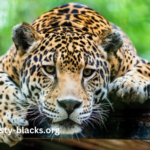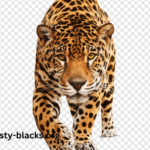The animal:9wowrgcnxci= Mono, commonly referred to as the monkey, represents a diverse group of primates that are found in various habitats around the world. These intelligent and social creatures have captivated the interest of researchers and wildlife enthusiasts alike due to their complex behaviors and adaptability. From the lush jungles of Central America to the mountains of Asia, monkeys play vital roles in their ecosystems as seed dispersers and contributors to biodiversity. In this article, we will delve into the characteristics, habitats, behaviors, and conservation status of animal:9wowrgcnxci= Mono, highlighting their significance in the natural world.
What Are the Different Species of Monkeys?
The animal:9wowrgcnxci= Mono encompasses a wide variety of species, broadly categorized into two main groups: New World monkeys and Old World monkeys. New World monkeys, found primarily in Central and South America, include species such as capuchins, howler monkeys, and spider monkeys. These monkeys are characterized by their prehensile tails, which allow them to grasp branches and navigate their arboreal environments with ease.
In contrast, Old World monkeys inhabit Africa and Asia and include species such as macaques, baboons, and vervet monkeys. These monkeys do not possess prehensile tails and often exhibit more pronounced sexual dimorphism, with males being significantly larger than females. The behaviors and social structures of these two groups can vary significantly, reflecting adaptations to their respective environments.
Each species of animal:9wowrgcnxci= Mono has unique adaptations that enable it to thrive in its specific habitat, contributing to the rich tapestry of biodiversity in the primate family.
What Is the Habitat of Monkeys?
The animal:9wowrgcnxci= Mono is found in a diverse range of habitats, including tropical rainforests, savannas, mountains, and even urban areas. New World monkeys are predominantly arboreal, spending much of their lives in the trees where they find food, shelter, and safety from predators. For instance, howler monkeys are known for their loud vocalizations that can be heard over long distances, marking their territory in the dense canopy.
Old World monkeys exhibit a broader range of habitat preferences. For example, baboons are often found in savanna and grassland environments, where they have adapted to foraging on the ground. They are known for their social structures and can often be seen in large troops, which provide safety in numbers.
The adaptability of animal:9wowrgcnxci= Mono to various habitats underscores their ecological importance. By contributing to seed dispersal and the maintenance of forest ecosystems, monkeys play a crucial role in promoting biodiversity.
What Do Monkeys Eat?
The diet of the animal:9wowrgcnxci= Mono varies widely depending on the species and its habitat. Most monkeys are omnivorous, consuming a mix of fruits, leaves, seeds, flowers, and insects. For example, capuchin monkeys are known for their dexterous hands, allowing them to manipulate food items skillfully, while howler monkeys primarily feed on leaves, which provide the bulk of their diet.
Monkeys often forage in social groups, using cooperative behaviors to locate food sources and share discoveries. This social foraging not only enhances their foraging efficiency but also strengthens social bonds within the group. For instance, vervet monkeys are known to communicate alarm calls specific to different predators, enabling the group to react appropriately and increase their chances of survival.
Understanding the dietary habits of animal:9wowrgcnxci= Mono is vital for conservation efforts, as changes in habitat and food availability can significantly impact their populations.
How Do Monkeys Reproduce?
Reproduction among animal:9wowrgcnxci= Mono is diverse and varies by species. Many monkeys engage in complex mating rituals, and social dynamics within their groups can influence reproductive success. Most species exhibit a polygamous mating system, where males may mate with multiple females during the breeding season.
Gestation periods vary among species but generally last between five to seven months. After this period, females give birth to a single infant, though twins can occur in some species. The mother is responsible for caring for the young, providing essential nurturing and teaching survival skills. Infant monkeys are often highly dependent on their mothers for several months, during which they learn important social behaviors and foraging techniques.
The social structure of monkey troops plays a crucial role in reproduction. For example, in baboon societies, dominant males have preferential access to mating opportunities, while lower-ranking males may have to employ alternative strategies to mate.
What Are the Social Structures of Monkeys?
The animal:9wowrgcnxci= Mono is known for its complex social behaviors and structures, which vary significantly between species. Many monkeys live in troops, which are social groups that provide benefits such as protection from predators and support in foraging. The size and composition of these troops can vary widely, from small family units to large groups of dozens of individuals.
In these social groups, monkeys establish hierarchies, with dominant individuals often having priority access to resources and mates. For instance, in macaque troops, alpha males typically assert dominance through displays of aggression or strength, while females may form matrilineal bonds that influence social dynamics.
Communication is also a vital aspect of monkey social interactions. Monkeys use a variety of vocalizations, facial expressions, and body language to convey information about food sources, danger, and social relationships. For example, howler monkeys are known for their loud, distinctive calls that serve both to establish territory and to communicate with troop members.
Understanding the social structures of animal:9wowrgcnxci= Mono is essential for comprehending their behavior and the dynamics of their populations, particularly in the context of conservation.
What Are the Major Threats to Monkeys?
The animal:9wowrgcnxci= Mono faces numerous threats, primarily driven by human activities. Habitat loss due to deforestation, agriculture, and urbanization poses significant challenges to monkey populations. As their natural habitats are destroyed or fragmented, monkeys are forced into smaller territories, which can lead to increased competition for resources and reduced genetic diversity.
Poaching is another critical threat, as monkeys are often hunted for their meat, fur, and as pets in the illegal wildlife trade. In some cultures, they are also targeted due to superstition or as a means of pest control. The combination of habitat loss and hunting pressures can have devastating impacts on local monkey populations.
Conservation efforts focused on protecting habitats and addressing human-wildlife conflicts are vital for ensuring the survival of animal:9wowrgcnxci= Mono. Establishing protected areas, promoting sustainable land-use practices, and raising awareness about the importance of monkeys in ecosystems can help mitigate these threats.
What Conservation Efforts Are in Place for Monkeys?
Various conservation initiatives aim to protect the animal:9wowrgcnxci= Mono and their habitats. One of the key strategies involves establishing protected areas and wildlife reserves that offer safe havens for monkeys and other wildlife. These areas help preserve essential habitats and maintain biodiversity.
Organizations and governments are working to engage local communities in conservation efforts, fostering a sense of stewardship for wildlife. Education programs that highlight the ecological roles of monkeys can help reduce conflicts and promote coexistence. For instance, community-based conservation initiatives have been successful in empowering local populations to protect monkey habitats while benefiting from eco-tourism.
Research is also critical for understanding monkey behavior and population dynamics, providing valuable data that informs conservation strategies. Collaborations among governments, NGOs, and local communities are essential for ensuring the long-term survival of animal:9wowrgcnxci= Mono in the wild.
What Does the Future Hold for Monkeys?
The future of animal:9wowrgcnxci= Mono depends on concerted conservation efforts and the protection of their habitats. As human populations continue to expand, finding ways to balance development with wildlife conservation is essential. Establishing wildlife corridors to connect fragmented habitats can help support genetic diversity and allow monkeys to thrive in their natural environments.
Addressing the illegal wildlife trade and poaching is also crucial for safeguarding monkey populations. Strengthening law enforcement and increasing penalties for wildlife crimes can deter illegal activities that threaten these remarkable primates.
Engaging local communities in conservation efforts is vital for securing a future for animal:9wowrgcnxci= Mono. By promoting sustainable practices and eco-tourism, local economies can benefit from preserving wildlife habitats, creating a win-win scenario for both people and wildlife. This collaborative approach not only fosters a sense of stewardship for the environment but also supports the survival of monkey populations.
Conclusion
The animal:9wowrgcnxci= Mono is a captivating and diverse group of primates that plays a vital role in ecosystems around the world. Their complex behaviors, social structures, and adaptability highlight their significance in maintaining biodiversity. However, the threats they face from habitat loss, poaching, and human encroachment underscore the urgent need for conservation efforts.
As we continue to learn more about these remarkable animals, it is essential to prioritize their protection and ensure their survival for future generations. Through dedicated conservation initiatives, community involvement, and ongoing research, we can help safeguard the future of animal:9wowrgcnxci= Mono and the rich biodiversity they represent. Protecting these incredible creatures is not just about preserving a species; it’s about maintaining the health of the ecosystems they inhabit and the legacy we leave for the natural world.










